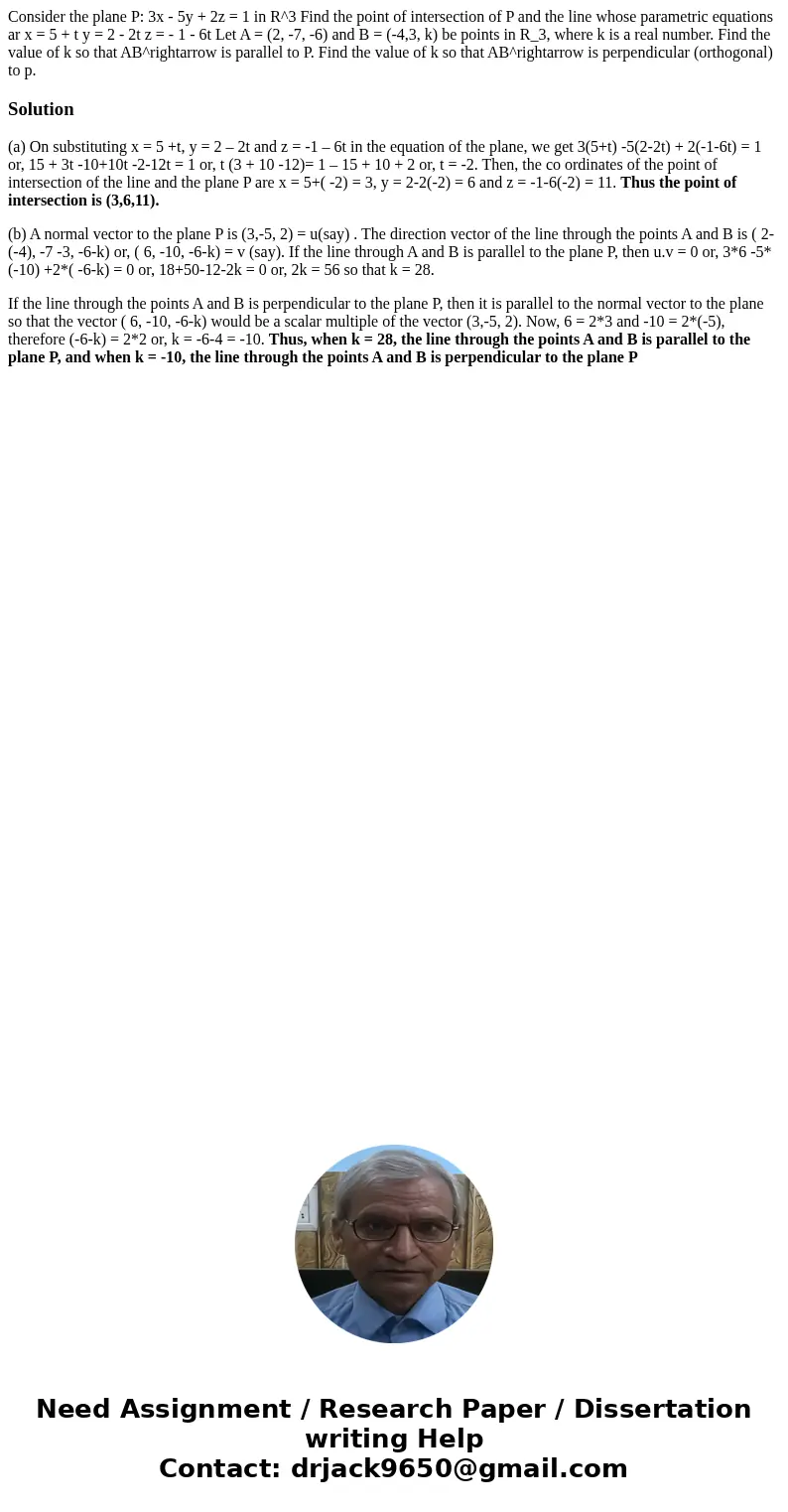Consider the plane P 3x 5y 2z 1 in R3 Find the point of i
Solution
(a) On substituting x = 5 +t, y = 2 – 2t and z = -1 – 6t in the equation of the plane, we get 3(5+t) -5(2-2t) + 2(-1-6t) = 1 or, 15 + 3t -10+10t -2-12t = 1 or, t (3 + 10 -12)= 1 – 15 + 10 + 2 or, t = -2. Then, the co ordinates of the point of intersection of the line and the plane P are x = 5+( -2) = 3, y = 2-2(-2) = 6 and z = -1-6(-2) = 11. Thus the point of intersection is (3,6,11).
(b) A normal vector to the plane P is (3,-5, 2) = u(say) . The direction vector of the line through the points A and B is ( 2-(-4), -7 -3, -6-k) or, ( 6, -10, -6-k) = v (say). If the line through A and B is parallel to the plane P, then u.v = 0 or, 3*6 -5*(-10) +2*( -6-k) = 0 or, 18+50-12-2k = 0 or, 2k = 56 so that k = 28.
If the line through the points A and B is perpendicular to the plane P, then it is parallel to the normal vector to the plane so that the vector ( 6, -10, -6-k) would be a scalar multiple of the vector (3,-5, 2). Now, 6 = 2*3 and -10 = 2*(-5), therefore (-6-k) = 2*2 or, k = -6-4 = -10. Thus, when k = 28, the line through the points A and B is parallel to the plane P, and when k = -10, the line through the points A and B is perpendicular to the plane P

 Homework Sourse
Homework Sourse